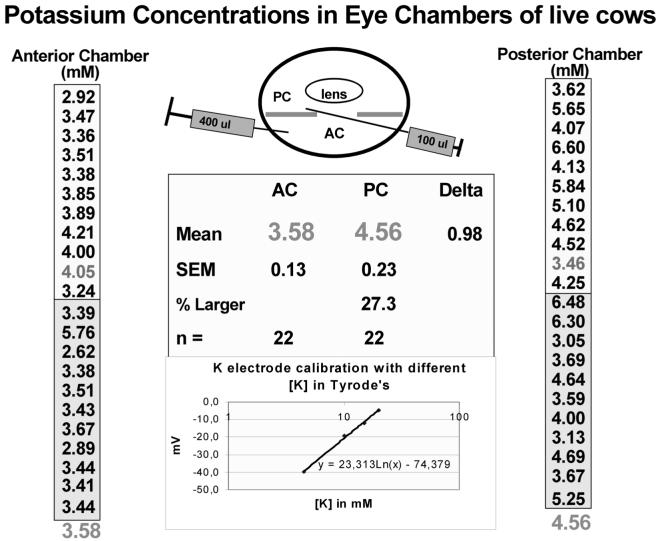Figure 3.
Aqueous humor potassium concentrations of the anterior and posterior chambers of the in vivo bovine eye. Cows at an Argentinean corral were immobilized within a narrow passage ending in a yoke that loosely closed around the neck separating the body from the head and allowing manipulations of head and neck without discomfort to the animal. These animals were destined to imminent slaughter under the supervision of a local veterinarian according to approved procedures. Two drops of topical proparacaine 0.5% (Alcon, Argentina) were instilled on the eyes as an anesthetic. Following this, an ophthalmologist (R. Gerometta of the Departamento de Oftalmología, Facultad de Medicina, Universidad Nacional Del Nordeste (UNNE), Corrientes, Argentina) performed paracentesis drawing about 0.1 ml from the posterior chamber and 0.4 ml from the anterior chamber. These samples were immediately stored on ice in capped vials for analysis with a K+-sensitive electrode at UNNE, which was done upon returning to the lab. Paired posterior and anterior samples from individual eyes were collected over the course of 2 days (distinct shaded backgrounds for each date of collection) and one mean for the posterior and anterior chambers was tabulated. The potassium concentration of the posterior chamber was higher than that of the anterior in 21 of the 22 eyes assayed.

